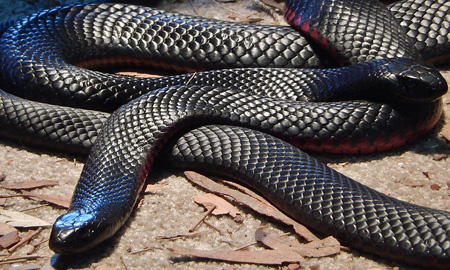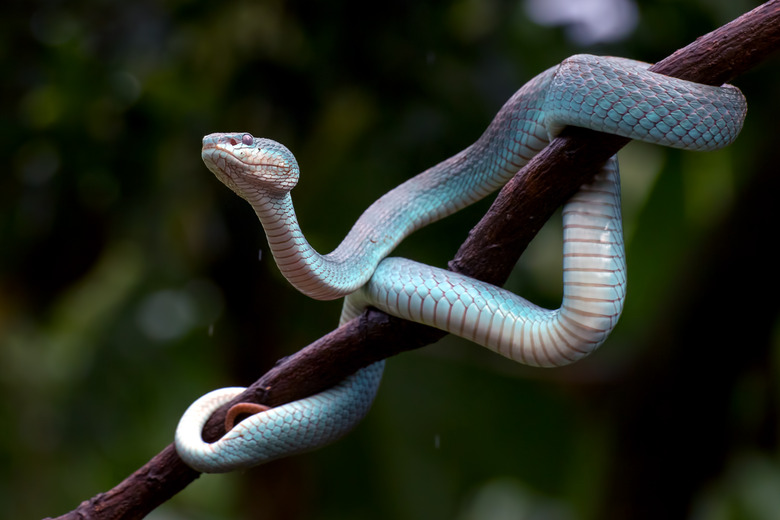Introduction
The Tasmanian tiger snake, medically known as Notechis scutatus, is read more among Australia's the majority of appealing reptiles. Discovered mostly in Tasmania and its surrounding islands, this snake has actually gathered attention not only for its striking appearance yet likewise for its complicated habits and important role in the community. This short article will check out the different facets of the Tasmanian tiger serpent's environment, behavior, makeup, and interactions with humans while supplying necessary info regarding precaution in situation of a serpent bite.
Whether you're a scientist, a wildlife lover, or just someone curious regarding these remarkable creatures, this detailed overview guarantees to provide understandings that are both insightful and appealing. So allow's start this journey to recognize the Tasmanian tiger snake better!
The Tasmanian Tiger Snake: An Overview
Physical Features of the Tasmanian Tiger Snake
Tiger snakes are characterized by their distinct pigmentation and patterns. They normally display a mix of yellow or lotion stripes on a dark brown or black history-- hence the name "tiger." Grown-up tiger serpents can grow up to approximately 2.1 meters long, although a lot of people average around 1.5 meters.

Key Functions:
- Coloration: Differs from dark brownish to olive environment-friendly with lighter bands. Size: Adults usually range from 1.2 to 2.1 meters. Head Shape: Noticeably broad with noticeable eyes.
Distribution and Habitat of the Tasmanian Tiger Snake
The Tasmanian tiger snake mainly populates seaside regions, wetlands, marshes, and meadows in Tasmania. It grows in atmospheres where it can conveniently gain access to water sources because it is usually located near streams or lakes.
Habitat Preferences:
- Wetlands: Perfect for searching prey like frogs and tiny mammals. Coastal Areas: Offers abundant food resources. Grasslands: Gives cover and basking spots.
Understanding Tiger Snake Behavior
Feeding Routines of the Tasmanian Tiger Snake
Tiger snakes are meat-eating and opportunistic feeders. Their diet regimen consists mainly of frogs, fish, small creatures, and birds. They count on their eager sight and swift movements for hunting.
Dietary Breakdown:
- Frogs: A primary element due to abundance in marsh habitats. Fish: Frequently caught when swimming in superficial waters. Small Animals: Sometimes exploit rodents.
Breeding Actions of the Tasmanian Tiger Snake
Tiger snakes have an interesting reproductive cycle. Mating generally occurs in springtime after emerging from hibernation. Women tiger serpents bring to life live young as opposed to laying eggs, which is rather unique among reptiles.
Reproductive Cycle:
- Mating Period: Springtime (September to November). Gestation Period: Roughly 3 months. Litter Size: Arrays from 20 to 40 baby tiger snakes.
Aggression and Defense reaction of the Tasmanian Tiger Snake
Though they can be hostile when threatened, tiger serpents commonly prefer to pull back rather than challenge threat straight. Their main defense mechanisms include attacking when caught or showing their dimension through hissing.
Defensive Techniques:
- Hissing Audio: A caution signal showing distress. Bite Reaction: A last resort when retreat alternatives are limited.
Are Tiger Snakes Venomous? Comprehending Their Venom
Venom Composition and Effects
Yes! The Tasmanian tiger serpent is venomous. Its venom includes neurotoxins that can create significant damage or even death if left neglected. The impacts of a bite can consist of paralysis, swelling at the bite site, queasiness, and various other systemic symptoms.
Venom Attributes:
- Neurotoxic Elements: Influence nervous system functioning. Hemotoxic Effects: Can lead to cells damage.
Common Signs Complying with a Tiger Snake Bite
Recognizing symptoms without delay is essential for efficient first aid monitoring after a serpent bite:
- Severe pain at bite site Swelling Nausea or vomiting Difficulty breathing
First Aid for Serpent Bites: What You Required to Know
Immediate Steps After a Tiger Snake Bite
In situation you encounter a scenario including a tiger snake bite, it's critical to act quickly:
Call emergency situation solutions immediately. Keep the affected limb incapacitated in mind level. Remove limited clothing or precious jewelry around the bite site.Creating Your Snake Bite First Aid Kit
Having a sufficiently stocked emergency treatment kit can make all the distinction during emergencies:|Item|Function|| ------|---------|| Compression plaster|To paralyze arm or leg|| Splint|To stabilize injured area|| Antibacterial wipes|For cleaning up wounds|
FAQs Concerning the Tasmanian Tiger Snake
What do infant tiger snakes eat?
Baby tiger serpents mostly feed on small pests and amphibians up until they expand big enough to quest larger target like frogs or small fish.

How dangerous is a tiger serpent bite?
A tiger snake bite can be extremely harmful because of its powerful poison; instant clinical interest is vital for survival.
Where are eastern tiger snakes found?
Eastern tiger snakes inhabit seaside areas across southeastern Australia yet are much less common than their Tasmanian counterparts.
What should I do if I see a tiger snake?
Maintain your range; do not attempt to handle it unless you're educated to do so-- most attacks happen throughout efforts at capture or mishandling.
Can I endure without antivenom after being bitten?
While some people might make it through without antivenom depending on different elements such as health conditions and time taken for therapy; seeking instant clinical aid is constantly recommended as it significantly raises survival chances.
Are there any type of certain safety measures I ought to take while treking in Tasmania?
Always use durable boots, stay on marked routes, stay clear of high turf where exposure may be limited; acquaint yourself with local wildlife before going out into nature!
Conclusion
The Tajamanian tiger snake represents a vital part of Australia's rich biodiversity landscape both environmentally as predators and culturally as signs within Australian mythology. Recognizing their environment preferences along with behavior provides understanding right into exactly how we can exist together safely while respecting wildlife boundaries-- keeping in mind that recognition leads us towards much safer journeys outdoors!
By staying informed regarding potential threats such as envenomation from bites while also taking safety nets makes certain favorable experiences when running into these remarkable creatures!

In final thought, whether you're captivated by their striking appearance or mesmerized by their complicated habits-- the Tasmanian tiger serpent certainly is worthy of acknowledgment past simple attraction-- it encapsulates nature's elegance Discover more here intertwined delicately within Find more information our ecosystems!